Solution of thermal bridges in dwellings with the system Poliuretan Spray S-383 HFO.
Project description
Our client Impimur S.L. is a company located in Lorca (Murcia) that has specialised for more than 25 years in thermal-acoustic insulation and waterproofing with polyurethane in the construction sector. In this case, it was contracted to carry out the insulation of thermal bridges during the construction of a residential building in Molina de Segura (Murcia).
Synthesia Technology's Poliuretan Spray S-383 HFO was chosen as protection and insulation system for thermal bridges in the pillars and slab edges. At the same time, our product Poliuretan Spray S-303 HFO was used for the insulation of the interior enclosure.
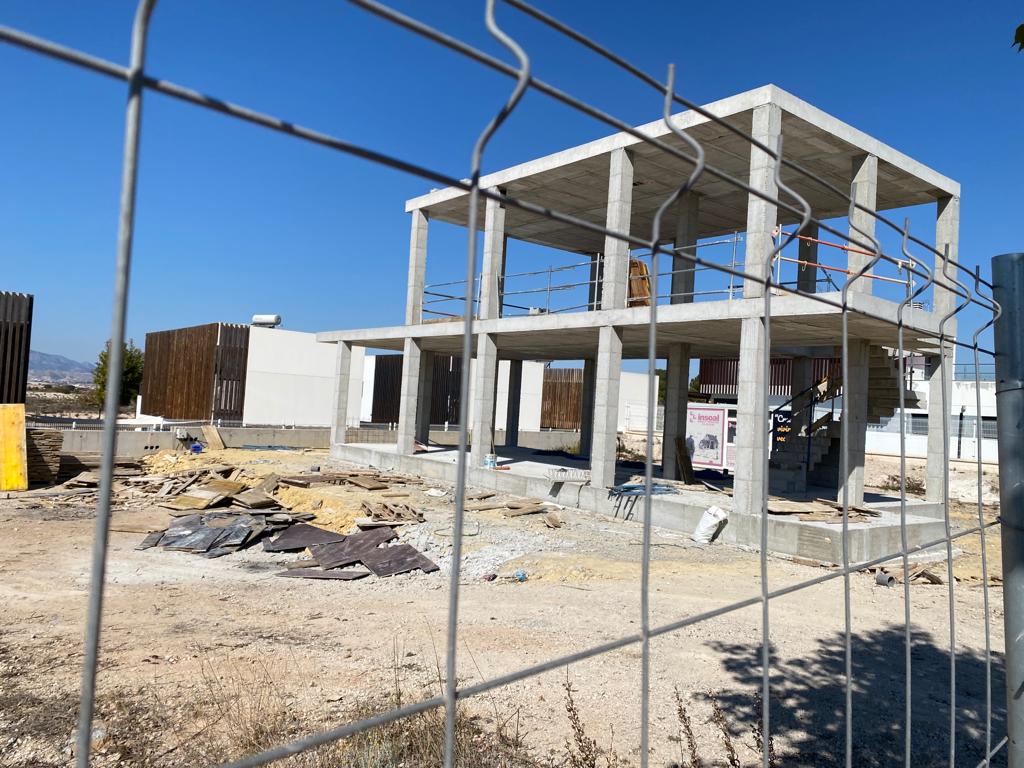
Description of thermal bridges
By thermal bridging we mean a heat leakage as a result of a technical defect in the thermal envelope of the building. Through this "technical defect", heat loss or heat gain occurs, resulting in a loss of the energy consumed for heating or cooling the interior spaces.
Thermal bridges therefore have an impact on energy efficiency. This is because they affect the demand for heating and cooling in homes and buildings. In fact, this issue is covered by the Energy Saving Regulations of the Technical Building Code (CTE). This means that a thermal bridge exists when any of the following circumstances occur:
- A change in the construction section of the enclosure.
- The complete or partial penetration of structural elements in envelopes with different thermal performance. The most frequent cases are pillars or slab fronts that interrupt the thermal insulation of the façade.
- A change in the geometry of the enclosure, such as at corners or at junctions between envelope elements.

Types of thermal bridges
The different types of thermal bridges, therefore, are: facade-integrated pillar, corner pillar, shaft contour, shutter box, facade meeting with slab, with roof, with floor in contact with the air and with floor screed. On this occasion, this study is focused on those thermal bridges that are related to the pillars of the structure.
Solutions for thermal bridges
The common objective in all of them is to guarantee the continuity of the insulation throughout the thermal envelope of the building and even the uniformity of the thermal transmittance value of each of the enclosures. We can affirm that the solution to thermal bridges requires a correct design of the envelope and an exhaustive control of the execution of the work. Minimising thermal bridges is essential to avoid unwanted energy losses, but also to reduce the risk of condensation formation.
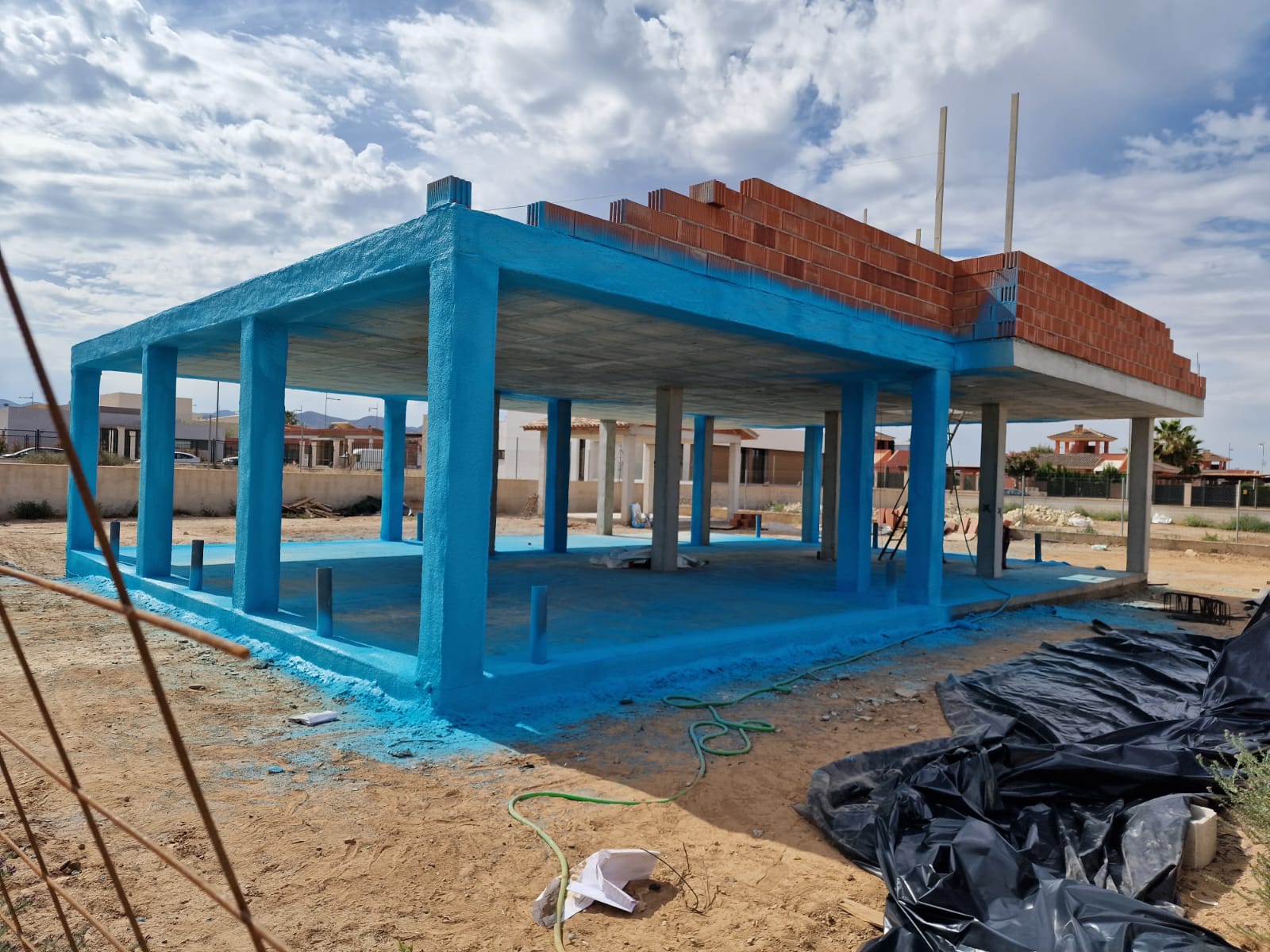
Description of the product
Poliuretan Spray S-383 HFO is a two-component polyurethane system, polyol and isocyanate, applied by "in situ" spraying to obtain rigid closed-cell foams for thermal insulation.
The Poliuretan Spray S-383 HFO system has been developed using a 4th generation blowing agent, which leads to a very low global warming potential index and a reduction of CO2 emissions.
At Synthesia Technology we use recycled PET from plastic bottles in the production of polyols, a key raw material used in the manufacture of high-performance insulation. We are demonstrating that it is possible to use plastic waste responsibly, recycling it into a new product that helps reduce energy consumption and CO2 emissions, to the benefit of all. In this way we are promoting the development of a circular and sustainable economy. Specifically, the Poliuretan Spray S-383 HFO is manufactured with a:
5,5% of recycled PET*
5% of Products of renewable origin
Equivalente a 15 botellas PET por m2 de espuma aplicada**
* Según norma UNE EN ISO 14021:2017
** Teniendo en cuenta un espesor de 10 cm y una densidad aplicada de 45 kg/m3
Poliuretan Spray S-383 HFO is a product in possession of several voluntary quality certifications such as the AENOR N Mark (020/003896 and 020/003895), as well as the SCHEME Keymark (020/003906 and 020/003905) and the Agrément CSTB (DTA 20/20- 455_41) in accordance with the EN 14315-1 standard.
Application Poliuretan Spray S-383 HFO
The Poliuretan Spray S-383 HFO system has an insulating function and is applied by spraying with high-pressure equipment equipped with heating and a mixing ratio of 1:1 by volume. Its main applications are thermal insulation and waterproofing of buildings, pillars, roofs, floors, buried walls and terraces. Once applied, its moulding density ranges between 40 and 50 g/l. Its smooth finish is particularly suitable for the application of thin coatings.
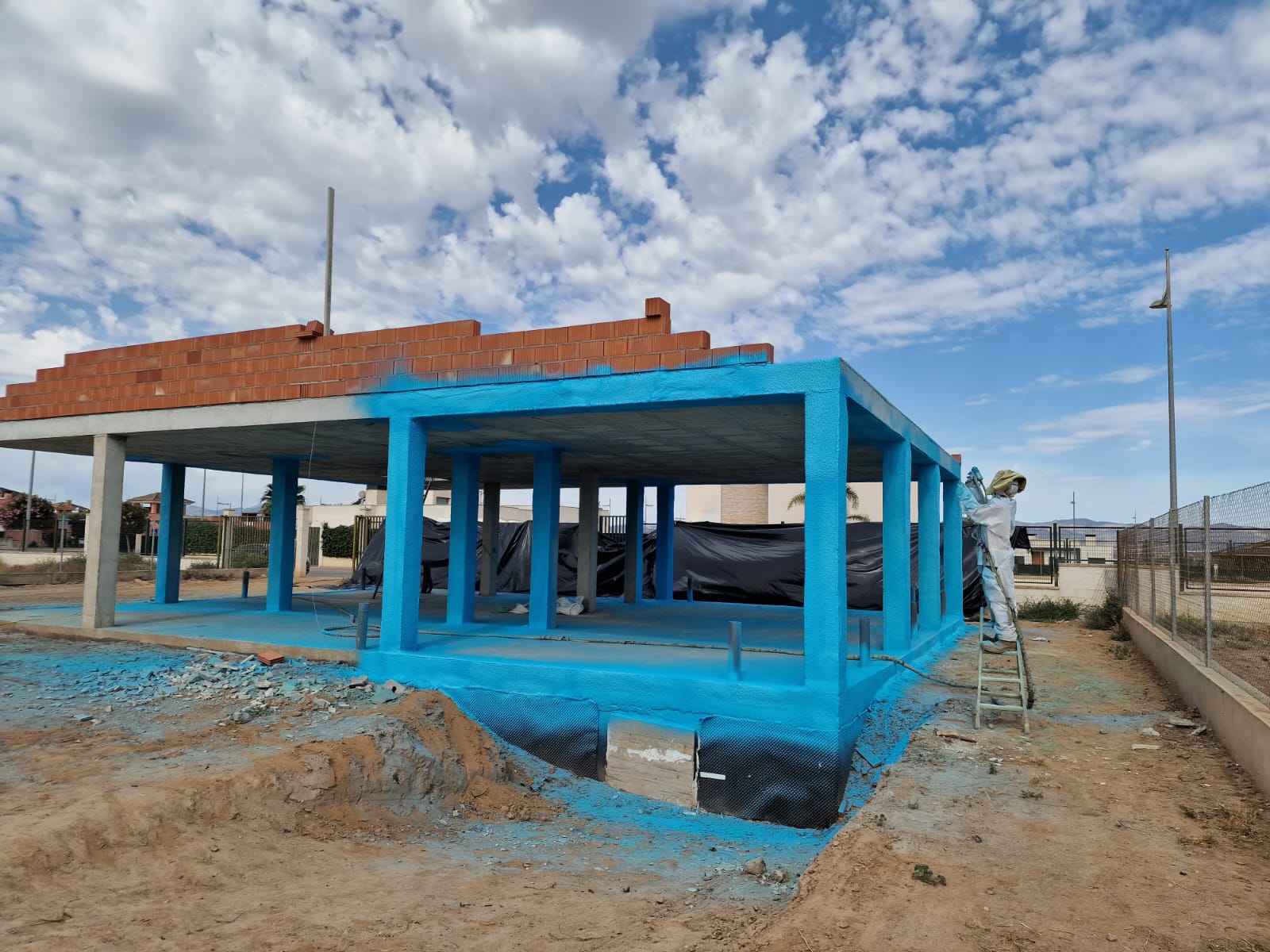
Advantages in application
- Total elimination of thermal bridges. The insulation has no joints or cracks, as it is a continuous insulation.
- Good adhesion to the substrate. No glue or adhesives are required for installation.
- Possibility of insulating and waterproofing in a single process. This is due, on the one hand, to its closed-cell, watertight structure and, on the other hand, to its continuous application method, which avoids joints.
- Mobility. Possibility to move quickly to any construction site without the need to transport or store bulky products, such as other insulating materials.
- Sealing of gaps dampening the passage of sound.
- Increase in living area compared to other insulating materials.
Conditions of application
To start applying the product Poliuretan Spray S-383 HFO, the surfaces must be clean, dry and free of dust and grease to ensure good adhesion of the foam to the substrate. In addition, if the substrate is metallic, it must be free of rust and rust. To ensure good adhesion on metallic substrates, the use of a suitable primer is recommended, as well as the application of a minimum density of 40 Kg/m³.
Applicators must wear full personal protective equipment when working with the product. It should be noted that our product Poliuretan Spray S-383 HFO can be applied in the desired colour using inorganic pigments. In this particular case, it was applied with a blue pigment to obtain the result of the application in that colour, as can be seen in the images.
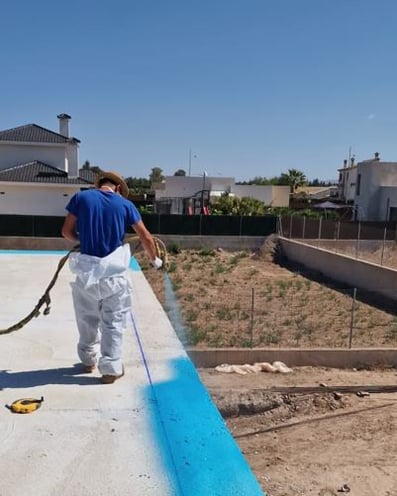

Final result
The application by spraying makes it possible to coat areas with an irregular surface or with a complicated geometry, forming a uniform film in the desired colour and protecting the entire structure against leaks and damp, thus extending the life of the structure.
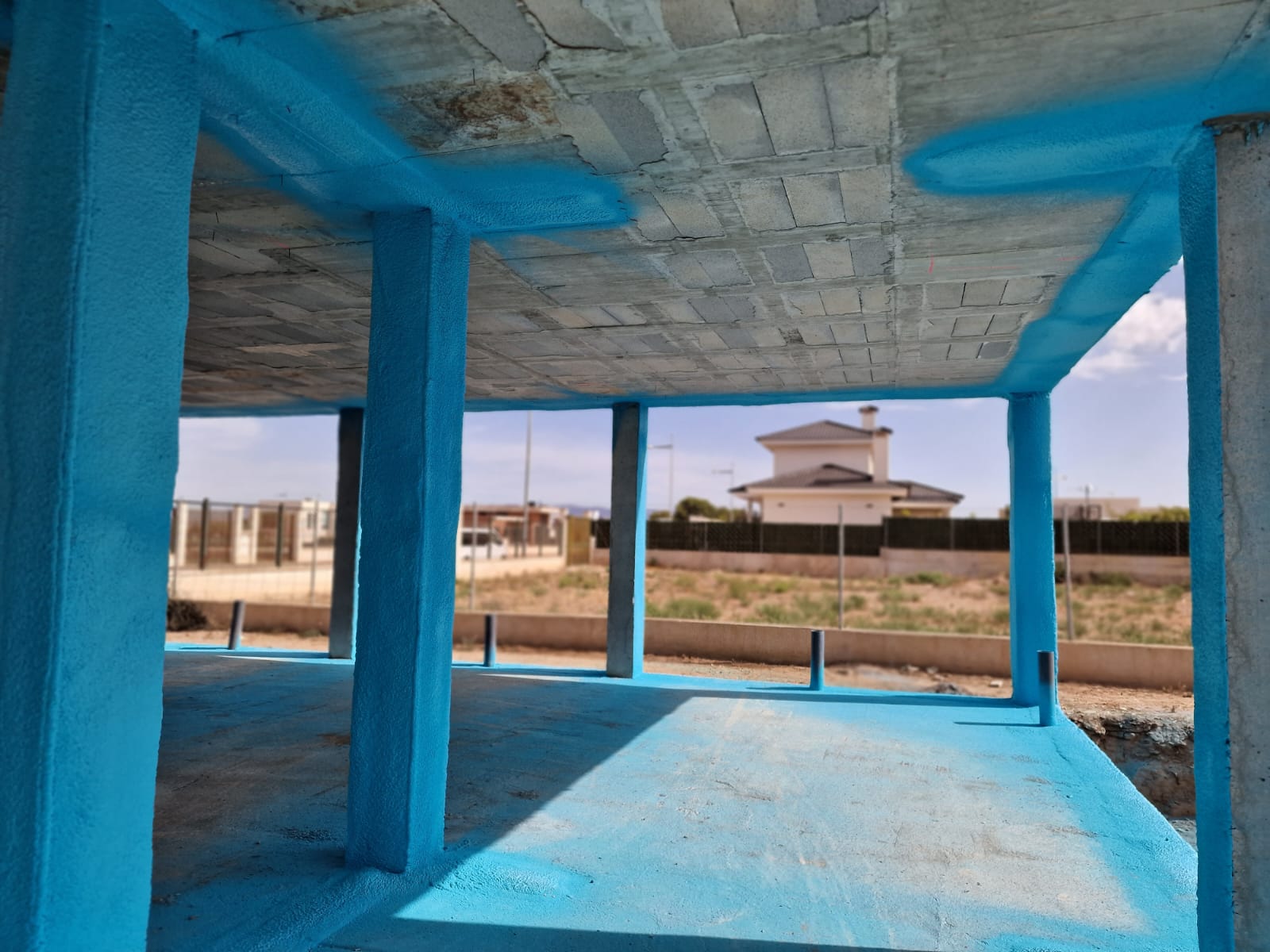


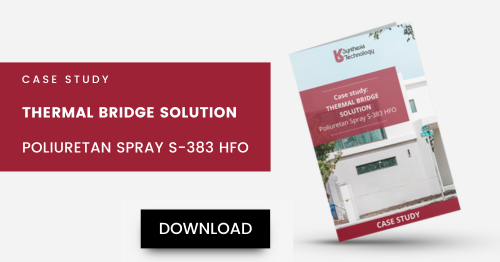

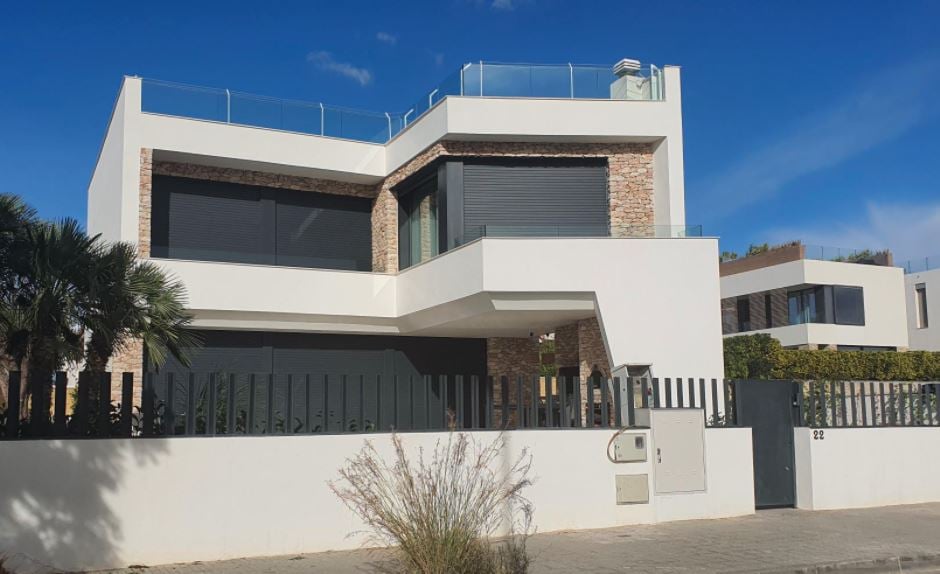
.jpg)







